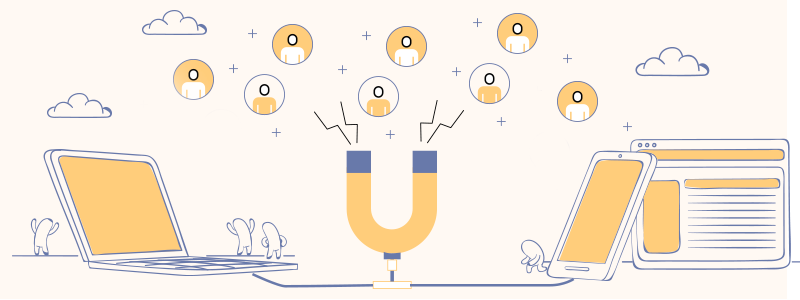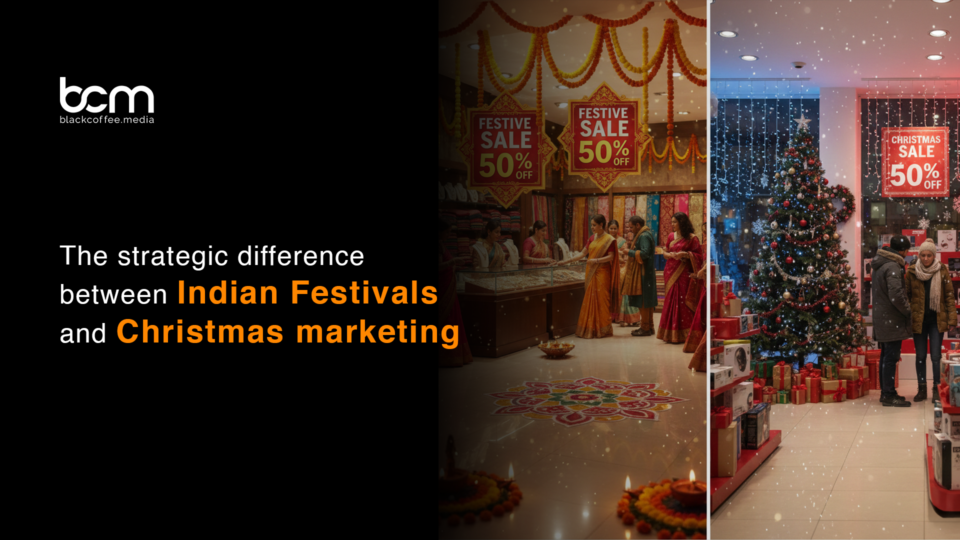
Reach New Audiences with Video Ads on Meta
July 21, 2022
5 Mistakes to avoid while hopping onto marketing trends in 2023
January 25, 20234 Effective Ways to Improve Customer Retention Rate in 2022

When was the last time you tried to re-engage customers in an effort to convince them to return? Though gaining new clients is vital for any business, keeping existing customers is just as important. In actuality, it’s a more economical method of scaling.
As gaining new clients is important for any business, keeping existing customers is just as important. In reality, it’s a more efficient option of scaling. Therefore, the majority of companies nowadays are concentrating on raising their client retention rate. Additionally, their confidence in you and interactions with you make them possible customers for your company.
What exactly is client retention?
Customer retention refers to a group of strategies used by a company to enhance the percentage of returning customers and the profitability of each individual client.
Customer Retention Rate: What Is It?
The percentage of current consumers that a brand was able to keep during a specific time period can be determined by analyzing the customer retention rate. One of the first factors that help a company maintain long-term growth is a high retention rate.Monitoring a company’s customer retention rate goes beyond simply assessing how well it continuously meets its needs. In reality, it increases client loyalty and trust, which in turn helps the business increase its Return on Investment (ROI). Mainly, it sets the business for long-term growth through sustaining positive ties with its clients.
Let’s take a closer look at why a company has to have a high client retention rate.
More affordable
Compared to recruiting new customers, the cost of retention is incredibly minimal. According to experts, acquiring a new customer costs at least six times as much as keeping an old one.
Return on Investment (ROI)
It increases because loyal clients do more business with a brand they are familiar with over time. Additionally, as they make larger purchases, the burden of maintaining or serving those consumers falls on the business.
Enhances Loyalty and Trust
Instead of going with an unfamiliar competition, repeat clients typically pay more or upgrade their payment plans over time.
How retention fits into your company
Which method you should concentrate on greatly depends on what you sell. A store that sells high-end leather furniture will be vastly different from one that sells tea and coffee.
The highest customer lifetime value (CLV) will go to a business whose clients frequently make high-value purchases. These are the stores that stand to benefit the most from an effective retention plan.
The secret to raising your client retention rate is recognizing the underlying indicators, which are the only ones that matter.
1. Customer loyalty rate
Comparing your repeat purchase rate is a great approach to see how effective your retention plan is in real life. Customers are more inclined to return to your store if this measure is greater.
2. Purchase frequency
Purchase frequency reveals how frequently customers return to your store to make purchases. This is crucial when you take into account that 40% of an average store’s annual revenue comes from recurring consumers.
3. Order Value on Average
The average order value metric measures how much money a customer spends on each transaction in your store.
4. Ways to Improve Customer Retention
You may retain more clients in a limited amount of time by using a few targeted customer engagements.
5. Suggestions for raising customer retention rates
You may retain more clients in a limited amount of time by using a few targeted customer engagements.
5.1 Modify prices to attract repeat business
Consider adjusting the pricing in a way that both demonstrates your appreciation for your consumers and doesn’t affect your profit margin. If you run an online store, for instance, you can change things up by offering free shipping or other discount choices. Or, you might provide a sensible and cost-effective membership that enables customers to save money as they make more purchases from you.
5.2 Develop a strategy for future relationship growth.
Showing the clients where their connection with the business is going is a considerate approach. If there are only routine transactions and nothing else, it won’t seem noteworthy. As they begin to look at other, better possibilities, this causes customers to stop buying.
A specific next step in the engagement can therefore give them the impression that they are a priority or desirable client. A regular review of the roadmap aids in the creation of new initiatives that jointly further the objectives of both parties. As a result, with this future planned technique, you can increase your client retention rate.
5.3 Action and Feedback
Requesting feedback doesn’t end things there. The responses from both leaving customers and current customers clearly outline areas for development! If you don’t comprehend the reasons why customers depart, you won’t ever take corrective action. Your team can investigate any problems that clients bring up after you receive their comments and take immediate action to resolve the situation.
Customers are more inclined to stick with you if they notice obvious improvements in those areas in a short period of time.
5.4 Create a program to encourage repeat customers.
Develop a program that rewards your current clients for their loyalty. This planned consumer engagement would serve as a dependable reward scheme to encourage people to keep choosing your brand. As they recommend your company to their family or acquaintances, you can think about adding points to their profile. You could also try thanking them in an email and offering them 8–10% off their subsequent purchases! Also, it’s essential to maintain the incentive message and activities clear while communicating them. It is necessary that the customer comprehends the value of the application quickly and effortlessly!
Keep clients to expand your business .The finest asset your store has is its current potential customer base. Visitors are aware of your brand, are familiar with your goods, and value your services.A great method to boost sales for your store is to concentrate your time and efforts on enhancing the experience for this demographic rather than continually seeking out new clients.top performace marketing in india



